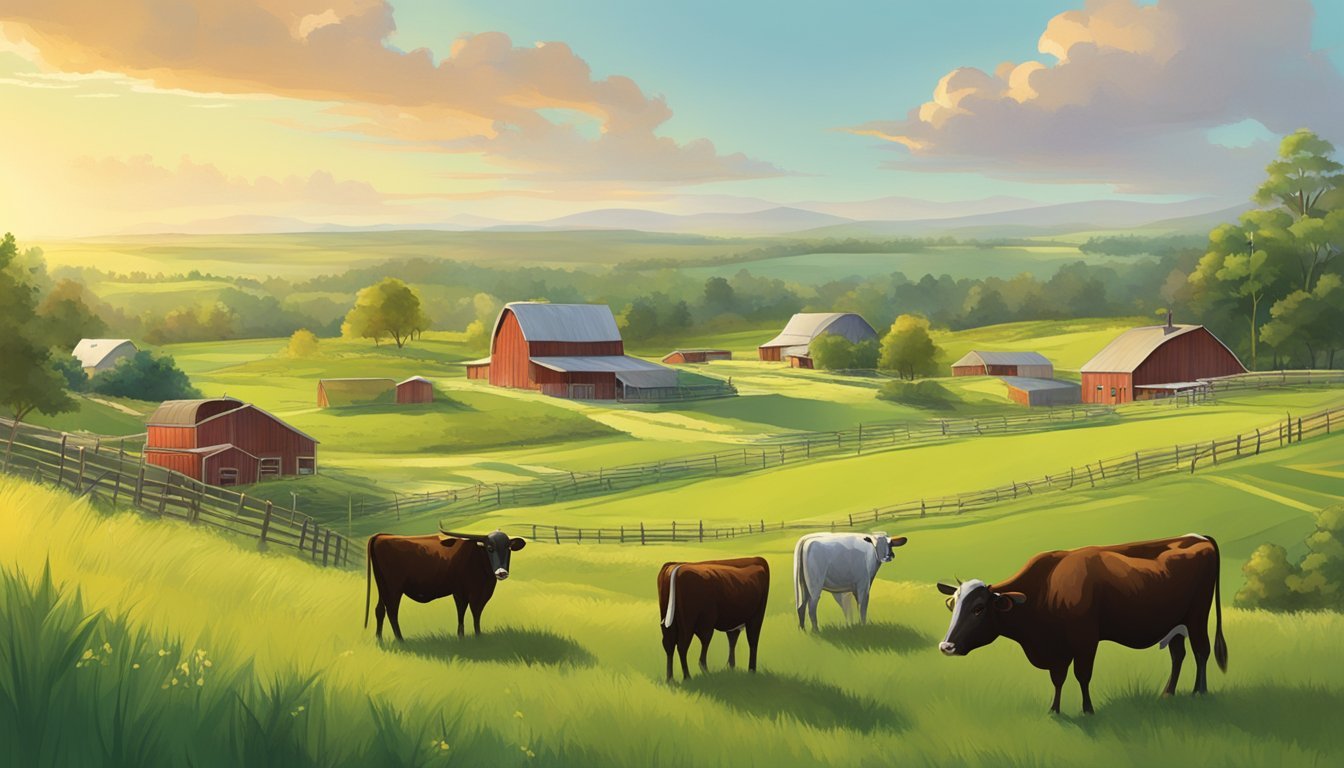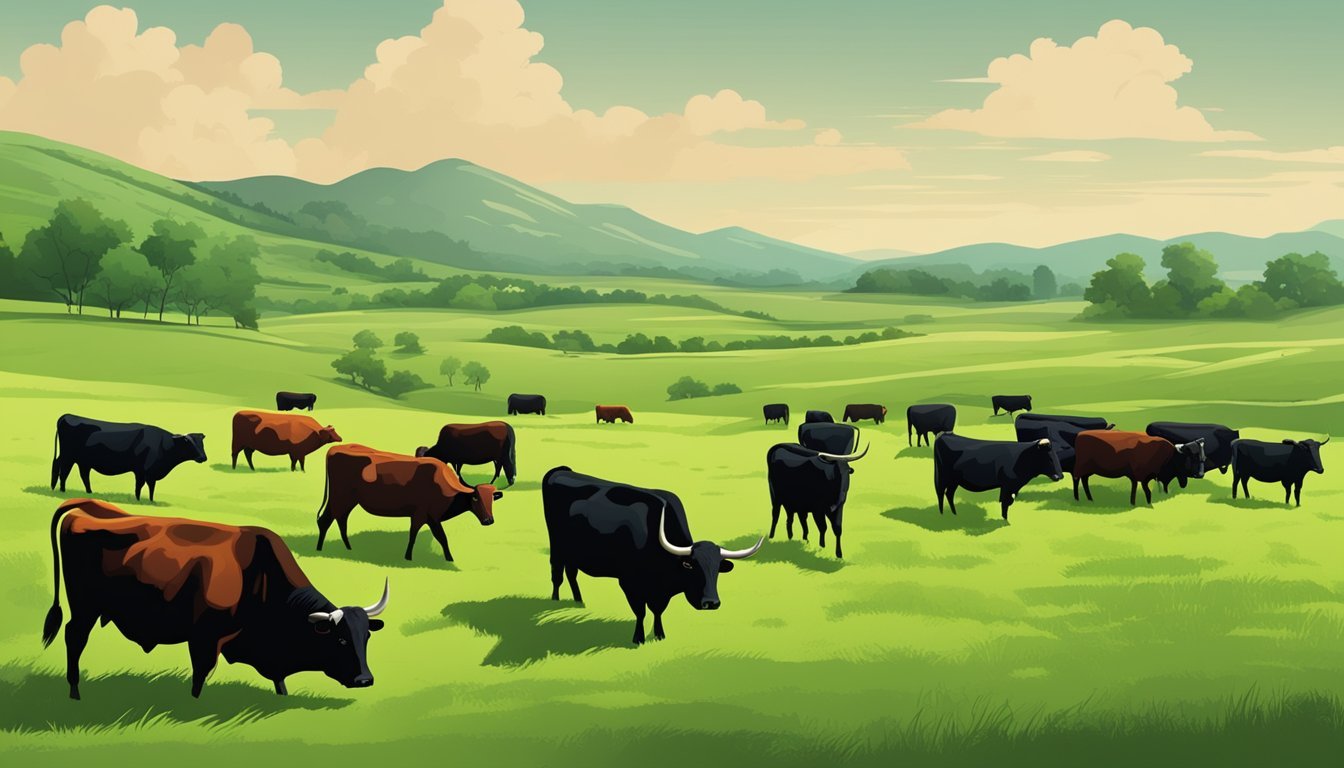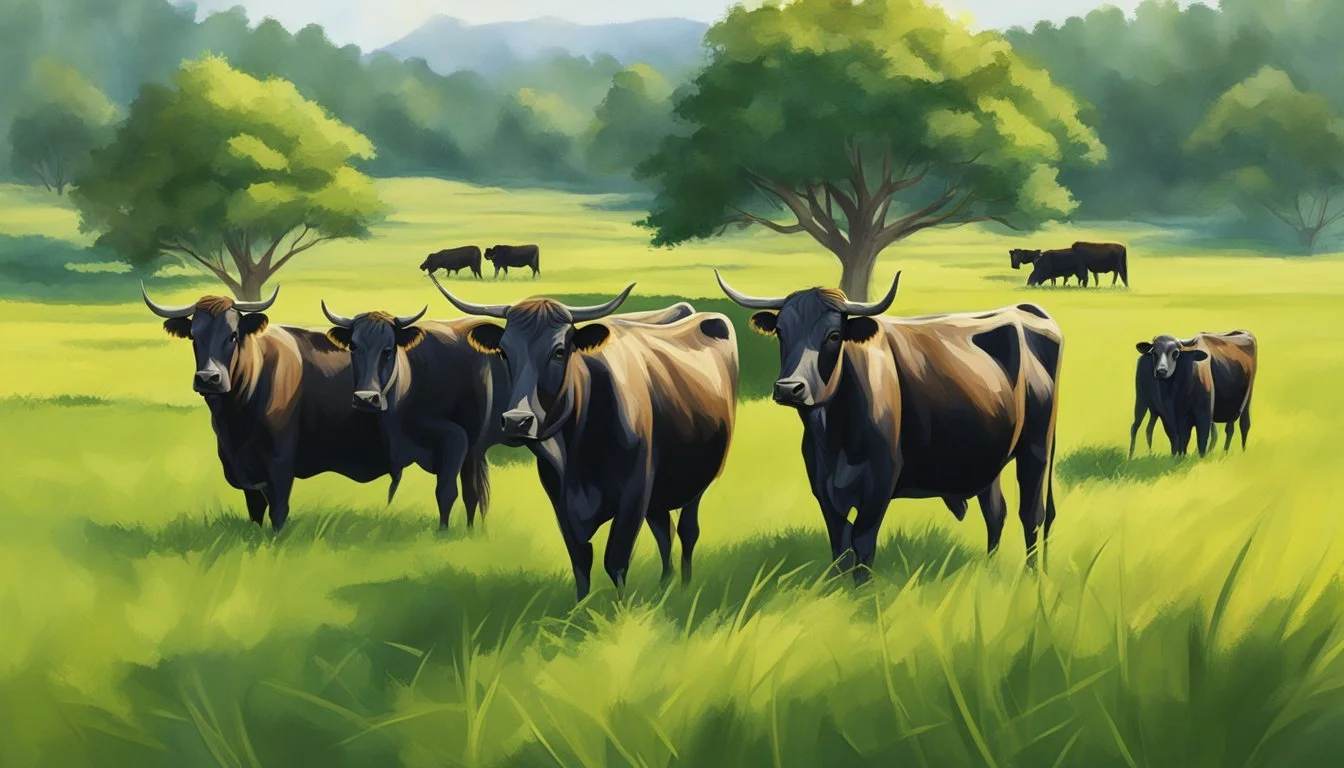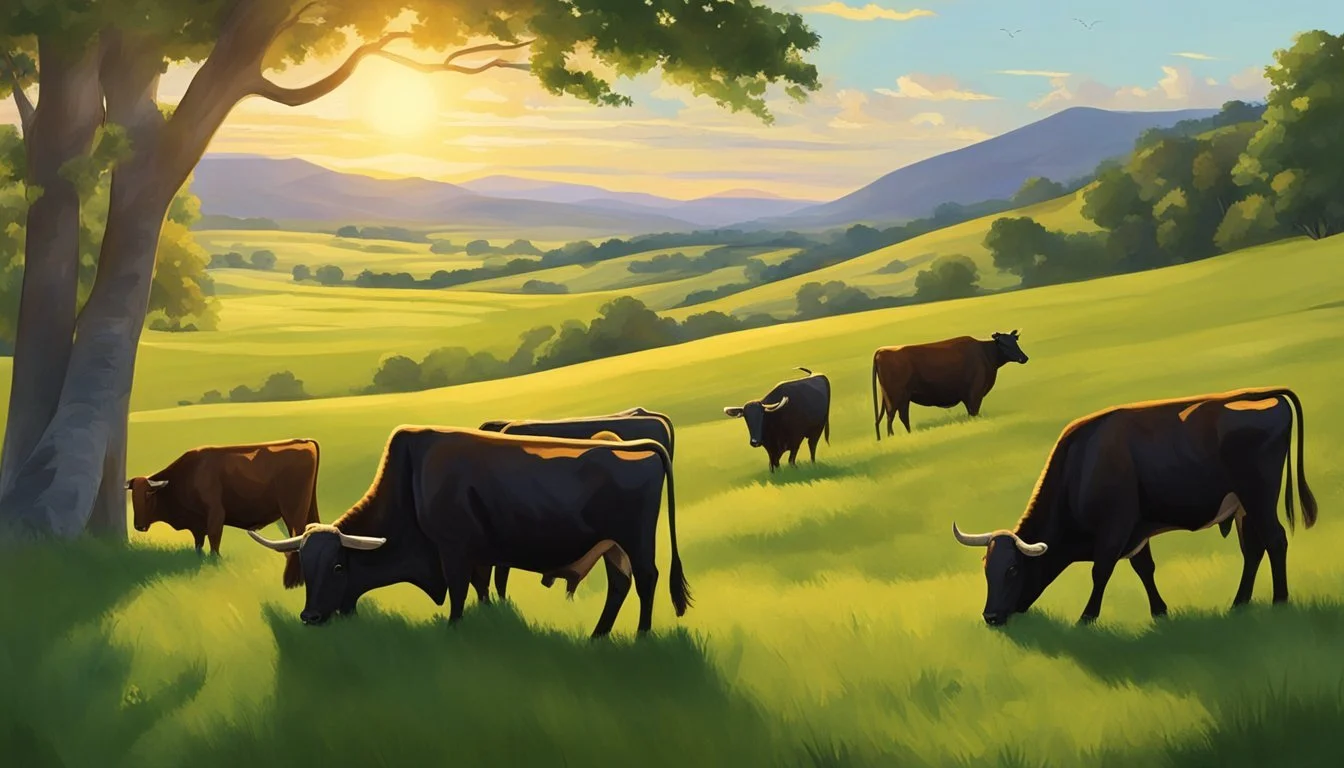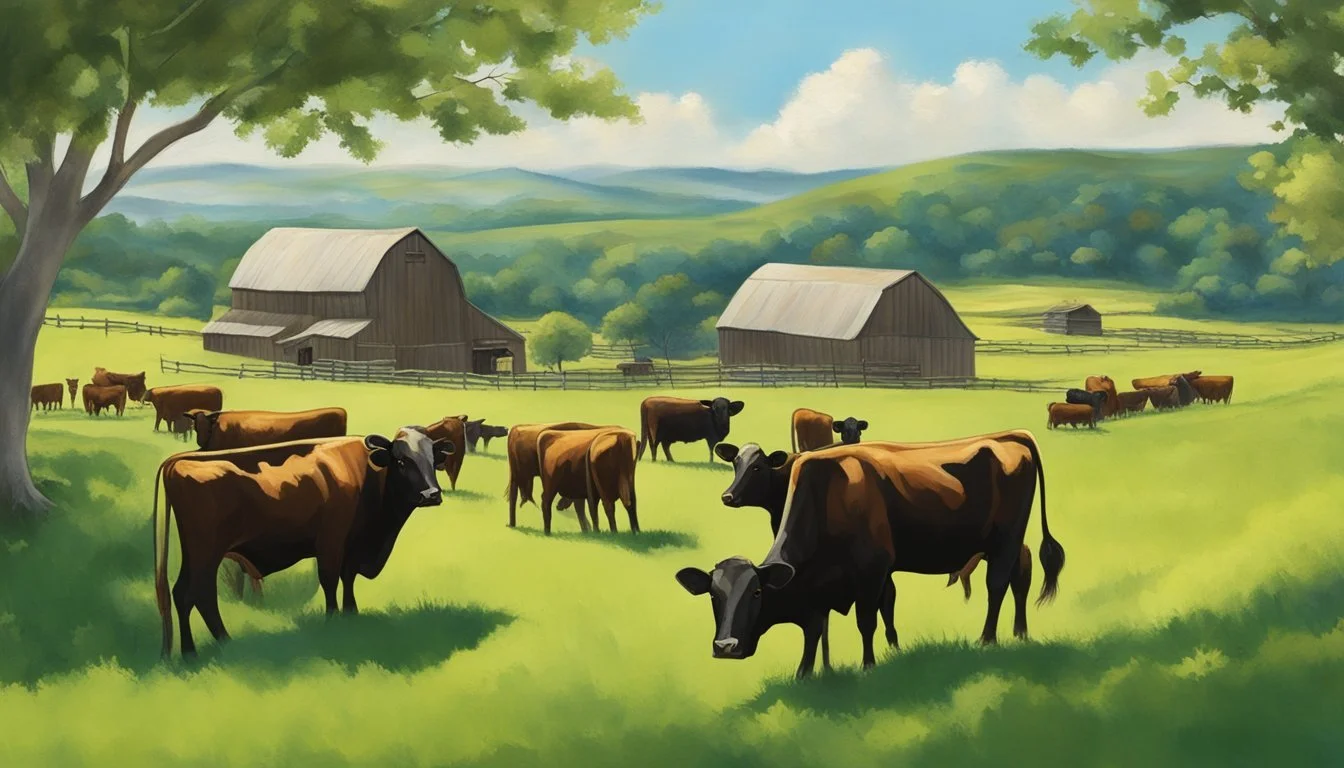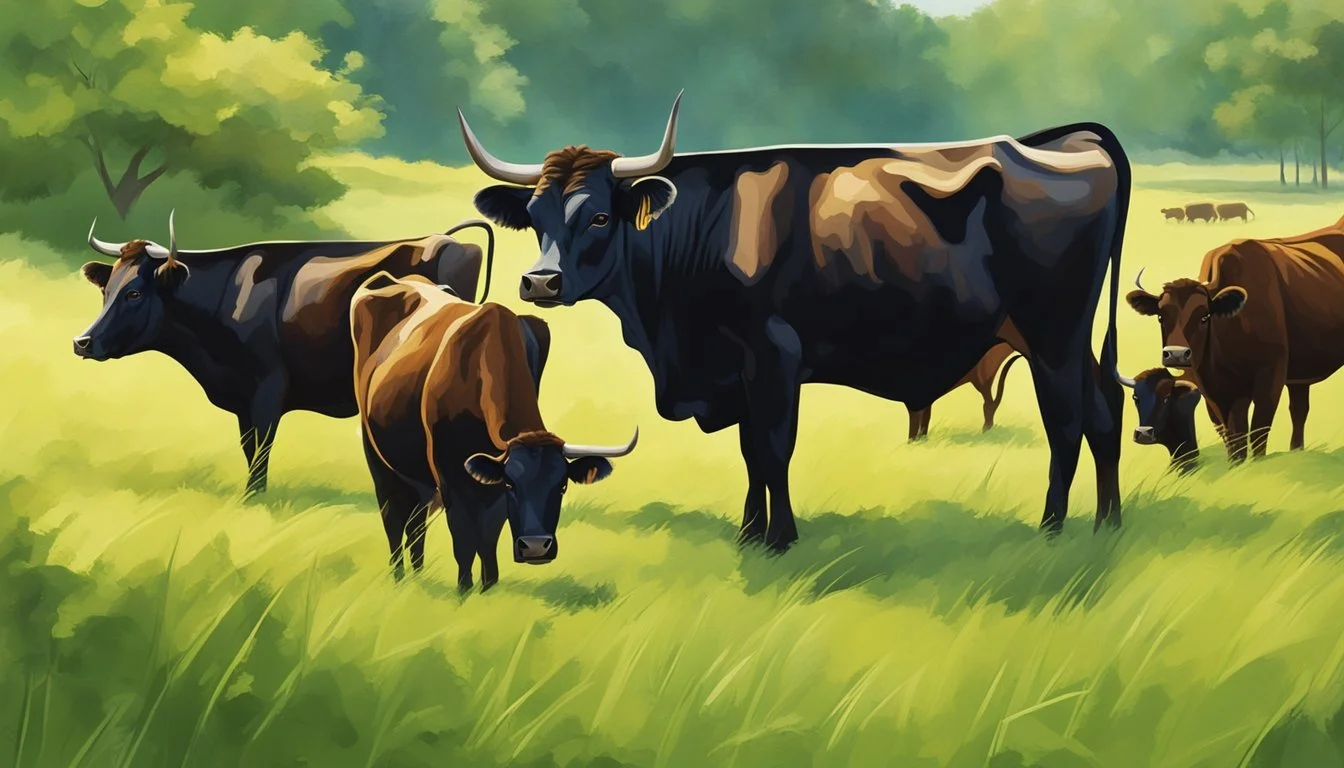Dexter Cattle and International Development
Enhancing Rural Livelihoods Globally
Dexter cattle, an Irish breed of small cattle, have been gaining attention for their potential in international development due to their hardy nature and efficient size. Originating in the 18th century, these cattle are named after a Mr. Dexter, a man associated with the estate of Lord Hawarden on Valentia Island, Ireland. As the smallest European breed, Dexters stand between 36 and 44 inches tall at the shoulder and weigh up to 750 pounds, a size that belies their adaptability and robustness.
With their small stature, Dexter cattle are suitable for a range of environments, which makes them particularly valuable in regions where agricultural land is limited or under pressure from environmental concerns. Their resilience and versatility allow them to thrive in varying conditions, from small homesteads to larger conservation and rewilding projects, demonstrating that small cattle can indeed have a significant impact on sustainable farming practices and rural economies.
As the world grapples with the challenges of food security and eco-friendly agricultural solutions, Dexter cattle present an adaptive and efficient option for small-scale farmers and larger development initiatives alike. Their compact build results in less damage to the soil, and their hearty appetites enable them to make the most out of available forage, contributing positively to sustainable farming systems and adding value to international development strategies that prioritize environmental well-being and economic viability.
The Dexter Cattle: Origin and History
The Dexter breed, originating from Ireland, provides an illustrious example of how a small-sized cattle has made a significant global impact. This section will explore the breed's roots, its spread across the world, and the role of societies and registries in its preservation.
Origins in Ireland
The Dexter cattle breed was developed in Ireland by the Celts and is historically associated with the southern region. It emerged in the 18th century and is believed to be named after a Mr. Dexter, an agent of Lord Hawarden who brought the breed into prominence. Recognizable for their petite frame, they were traditionally used for both milk and meat, presenting a dual-purpose benefit to farmers.
Global Spread and Dexter Cattle Societies
By the 20th century, Dexter cattle had begun to gain international recognition, reaching shores beyond Ireland. They were first introduced to America in the early 1900s and to other countries such as Canada and Australia, adapting to diverse climates and farming needs. The establishment of the Dexter Cattle Society in 1924 by the English Kerry and Dexter Cattle Society marked a dedication to promoting the breed exclusively. In America, the American Dexter Cattle Association was constituted in 1957, signifying a renewed effort to preserve and promote the breed domestically.
Preservation and Registries
The active role of breed societies culminated in meticulous record-keeping and the establishment of herd books – a practice initiated soon after the domestication of Dexter cattle. Historical data show that by 1926 the English herd book recorded nearly a thousand bulls and several thousand cows. The American Dexter Cattle Association has been pivotal in the breed's revival in the United States from the mid-20th century, preventing its near extinction and maintaining a comprehensive registry that tracks the lineage and ensures the breed's genetic integrity.
Characteristics of Dexter Cattle
Dexter cattle are known for their compact stature and hardiness, making them suitable for various environmental conditions. Their versatility is evident in both their physical traits and their temperament, contributing to their increasing popularity in diverse farming settings.
Physical Traits and Colors
Dexter cattle typically measure between 36-44 inches tall at the shoulder and can weigh up to 750 pounds. They are characterized by either short or non-short (long) legs, contributing to their distinct appearance. Dexter cattle come in three primary colors: black, red, and dun. While traditionally horned, with short to moderately thick horns emerging laterally, many breeders now select for polled (hornless) animals through careful breeding practices.
Temperament and Behavior
Dexters are known for their gentle, docile, and calm temperament, making them a preferred breed for small-scale farms and homesteads. This demeanor is not only favorable for handling and management but also enhances their role as a dual-purpose breed, being used for both milk and meat production. Their temperament paired with their size makes them versatile and manageable for various farming practices.
Health and Longevity
The breed's inherent hardiness contributes significantly to the health and longevity of Dexter cattle. They are adaptable and resilient to many climates and conditions, which supports their ability to thrive on less acreage than larger breeds. Their longevity is notable, with many Dexters living and producing well into their twilight years, a testament to the breed's robust genetic traits.
Dexter Cattle in Agriculture
Dexter cattle serve as an effective dual-purpose breed, known for their milk and beef production, and are especially suited to small-scale farming and conservation efforts due to their environmental adaptability.
Dexter Cattle as a Dual-Purpose Breed
Dexter cattle are small, hardy cattle that are classified as a dual-purpose breed. They are capable of producing quality milk and beef. Despite their smaller size, they yield a comparatively high quantity of milk that is rich in butterfat, making it ideal for cheese and butter production. The beef from Dexter cattle is noted for its tender quality and distinct flavor, which is highly valued in niche markets.
Grazing and Environmental Adaptability
These cattle are renowned for their ability to thrive in a variety of climatic conditions and are often praised for their efficient grazing. Dexter cattle can convert grass to meat and milk effectively, which makes them an excellent choice for grass-fed systems. They are often utilized in conservation grazing projects due to their gentle grazing that promotes biodiversity.
Small-Scale Farming and Homesteads
They are particularly well-suited for small landholders and homesteads due to their manageable size and calving ease. The breed’s productivity on a smaller scale makes it a practical option for those with limited land resources. Their adaptability to different farming systems allows small-scale farmers to maintain sustainable production without compromising on animal welfare or quality of the produce.
Conservation and Genetic Diversity
Preservation of Dexter cattle contributes significantly to the conservation of genetic diversity in livestock. Genetic variation within breeds like the Dexter is vital for the resilience of agriculture to changing environments. Moreover, their presence in rewilding projects can aid in maintaining ecological balance while also ensuring the survival of this historic breed.
Dexter Cattle and Economic Impact
Dexter cattle are proving to be a valuable asset in stimulating local economies, enhancing food security, and empowering small-scale farmers.
Contribution to Local Economies
Dexter cattle have a significant positive effect on local economies. They require less land, making them ideal for small farms, which are often more integrated into local markets. The sale of Dexter cattle and their products often leads to income generation and increased economic activity in rural areas.
Addressing Food Security
By providing a sustainable source of protein, Dexter cattle contribute to food security, especially in areas where agricultural space is limited. With the ability to produce about 2-3 gallons of milk per day and quality beef, they are important for feeding local communities.
Empowerment of Small Farmers
The small size and docile nature of Dexter cattle make them an excellent choice for smallholders. They are easily handled and require lower inputs than larger breeds. This empowers small farmers by offering them a breed that is less costly to raise and maintain, ultimately aiding in economic stability and growth for their farming enterprises.
Rearing and Management of Dexter Cattle
Successful rearing and management of Dexter cattle require an understanding of their unique characteristics and needs. They are adaptable and hardy animals, well-suited to a range of environments, making them ideal for small-scale farming and contributing effectively to international development efforts.
Nutritional Needs and Feeding
Dexter cattle are relatively easy to feed due to their efficiency in converting forage into milk and meat. Their diet primarily consists of:
Pasture: High-quality grass is the staple of their diet during the grazing season.
Hay: During winter, hay or silage can be provided to supplement grazing shortages.
Grain: A limited amount of grain can be offered, especially to lactating milking cows, for additional nutrients.
When designing a feeding program, consider:
Life Stage: Calves, lactating cows, and pregnant females have different nutritional requirements.
Season: Dietary adjustments should be made according to the availability of pasture during different seasons.
Breeding and Calving Practices
Dexter cattle are known for their ease of calving, often requiring minimal assistance. Breeding practices include:
Selective Breeding: To maintain the breed's quality, select traits such as good maternal instincts, easy to handle temperament, and strong conformation.
Monitoring: Keep a close watch on cows as their due dates approach to ensure prompt attention to any complications.
Calving:
Frequency: Dexter cattle generally have a 12-month calving interval.
Management: After birth, ensure that the offspring receive adequate colostrum from the mothers and monitor both the calves and mothers for signs of illness or distress.
Disease Prevention and Health Checks
Disease prevention in Dexter cattle involves a proactive approach through routine health checks and vaccinations:
Vaccinations: Implement a vaccination schedule to protect against common bovine diseases.
Regular Health Checks: Perform routine examinations for signs of illness, such as checking eyes, hooves, and body condition.
Parasites: Control parasites through strategic deworming and pasture management.
Key Points:
Consistency: Regular and consistent health checks are crucial.
Record Keeping: Keeping detailed health records assists in early detection and management of potential issues.
By adhering to these subsections in the rearing and management of Dexter cattle, smallholders can maximize their herd's productivity and contribute to sustainable development.
Dexter Cattle for Milk and Meat Production
Dexter cattle excel as a dual-purpose breed, offering substantial milk yields with high butterfat content, alongside meat production characterized by lean, flavorful beef with desirable marbling.
Milk Quality and Butterfat Content
Dexter cattle are efficient dairy producers, typically yielding 2-3 gallons of milk daily. Their milk stands out with a high butterfat content, usually around 4%, which is higher compared to many dairy breeds. The rich butterfat content not only improves the taste but also enhances the milk's suitability for producing cheese and butter.
Meat Characteristics and Quality
The meat from Dexter cattle is noted for its tender texture and flavorful taste. These cattle produce meat with a good degree of marbling, which contributes to its tenderness and rich flavor. Despite their small stature, Dexters are efficient in their feed to meat conversion, able to provide approximately 400 pounds of beef from a single animal. Meat production from Dexter cattle is renowned for being lean and of a high quality, aligning well with market demands for healthful and tasty beef options.
Cultural and Societal Influence of Dexter Cattle
Dexter cattle have a distinct legacy, particularly influencing traditional rural communities and gaining unique spots in popular culture.
Traditional Use in Rural Communities
Historically, Dexter cattle are known for their significant role within rural communities in Ireland. Originating in the early 1800s, these cattle became integral in regions like County Kerry and County Tipperary, where small landholders relied on them for dual-purpose usage—both milk and meat production on limited acreage. Their small size allowed for more efficient maintenance and lower feed costs, which were critical for sustaining agricultural livelihoods within these communities. The breed's heritage in these localities underscores the cultural bond between the people and their livestock, forming part of the identity of these traditional rural sectors.
Dexter Cattle in Popular Culture and Media
While their presence in popular culture is less dominant than in agricultural spheres, Dexter cattle have been featured occasionally in media, highlighting their distinctive characteristics and heritage. Documentaries and educational programs focusing on sustainable farming and conservation may showcase Dexter cattle, presenting them as a versatile breed suited for modern ecological challenges. Additionally, their unique size and docile nature occasionally lead to appearances in children's books and agricultural-themed entertainments, contributing to a cultural recognition beyond their immediate utility.
Future Outlook for Dexter Cattle
Dexter cattle are set to play a pivotal role in sustainable agriculture and international development due to their hardiness and smaller size. These qualities make them an optimal choice for diverse farming systems and conservation efforts.
Sustainable Farming Practices
Dexter cattle are known for their adaptability to a wide range of environments, which positions them well for a future in sustainable farming. Farmers appreciate their ability to thrive on less pasture than larger breeds, which can lead to a reduction in overgrazing and soil degradation. This breed's efficiency in converting feed to meat and milk also underscores their role in future sustainable livestock management.
Feed Efficiency: Their smaller stature requires less food relative to body weight.
Land Management: Dexter cattle can graze on marginal lands unsuitable for crops.
Conservation Grazing: Their foraging behavior can help maintain and improve biodiversity.
Role in International Development
In low-resource settings, Dexter cattle offer a promising avenue for international development. Their size makes them less intimidating and more manageable for smallholder farmers, particularly in developing countries where livestock is a critical component of household resilience.
Genetic Diversity: Dexter cattle contribute to the genetic variety and resilience of livestock populations.
Resource Allocation: They require fewer inputs, which is essential in regions where resources are limited.
Economic Incentive: Dexters can provide a steady source of income from meat, milk, and leather.
By incorporating Dexter cattle in international development programs, communities can leverage local agricultural practices to foster economic growth while ensuring ecological stability.
Notable Dexter Cattle Herds and Breeders
This section details the historical significance and contributions of established Dexter cattle herds and individual breeders that have shaped the breed throughout its history.
Historical Herds and Foundations
The English Kerry and Dexter Cattle Society, recognized in 1924 as the Dexter Cattle Society, played a pivotal role in establishing the breed’s presence in herd books, recording nearly 1,000 bulls and close to 4,000 cows by 1926. In the United States, notable historical herds include the Peerless Herd and the North Oaks Herd, which were foundational in developing the breed's prominence in the country.
Noteworthy Historical Herds:
Elmendorf Farm: A significant contributor to the Dexter breed with a well-documented lineage. Castlegould and Hempstead House Herds: Owned by Howard Gould, these herds were part of the esteemed Gould family estate, showcasing the breed's luxury status in the early 20th century. Clove Brook Herd: An influential herd known for its quality and contribution to breed standards.
Influential Breeders and Contributors
Among breeders, Lord Howarden stands out as an influential figure, with their dedication to quality breeding contributing to the Dexter’s standing as a viable small-farm cattle option. In more recent years, James J. Hill has been recognized for advocating and expanding Dexter cattle through the North Oaks Herd.
In the modern context, farms such as Elmendorf Farm continue to play a crucial role in sustaining and improving the Dexter breed, maintaining both the lineage and the functional characteristics that make Dexters valuable to smallholders and sustainable agriculture practices.
Key Breeders and Their Contributions:
Howard Gould: His establishment of the Castlegould and Hempstead House herds placed a spotlight on the breed’s potential. James J. Hill: Credited with expanding the breed through the North Oaks Herd, enhancing its reputation and significance in the United States.

